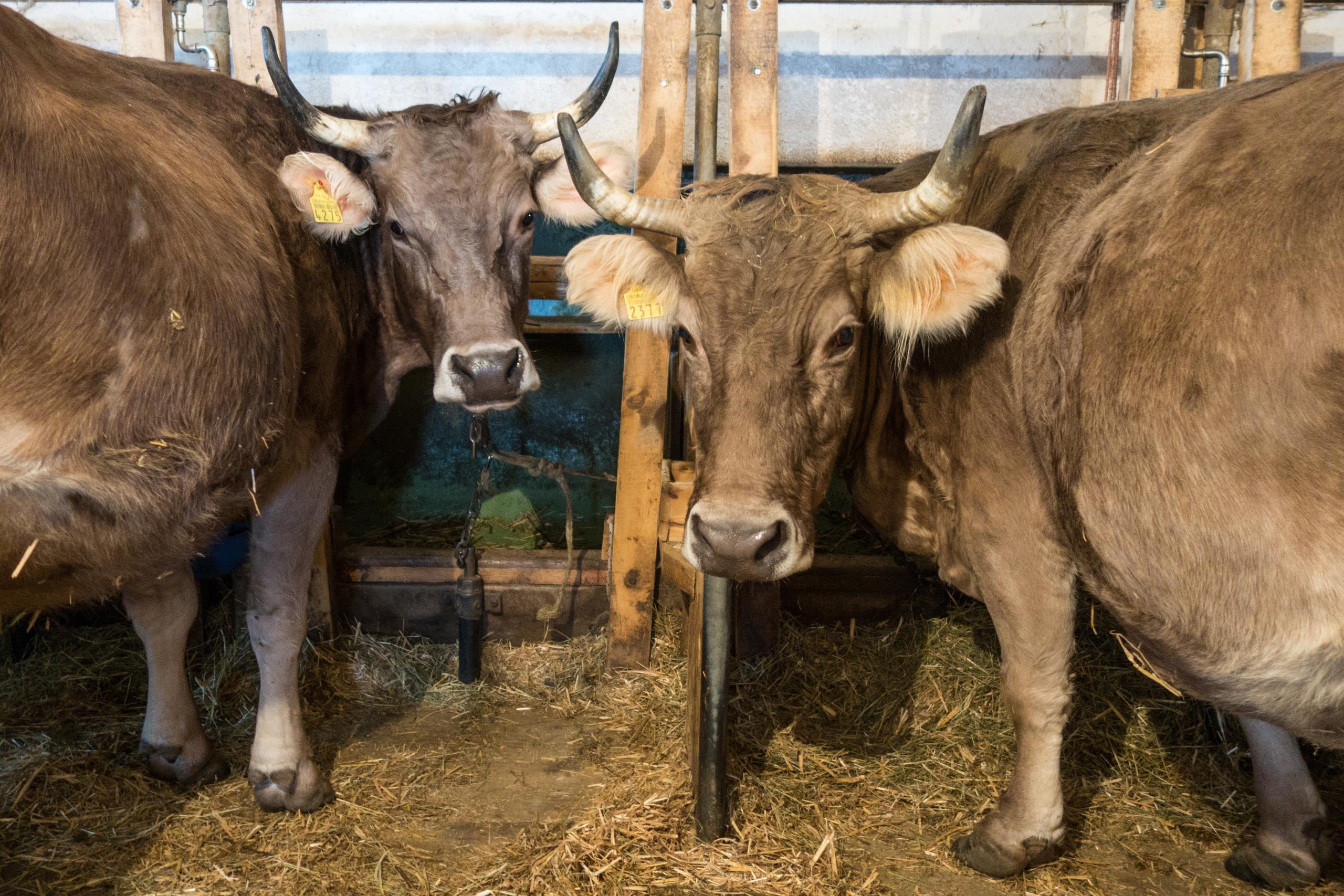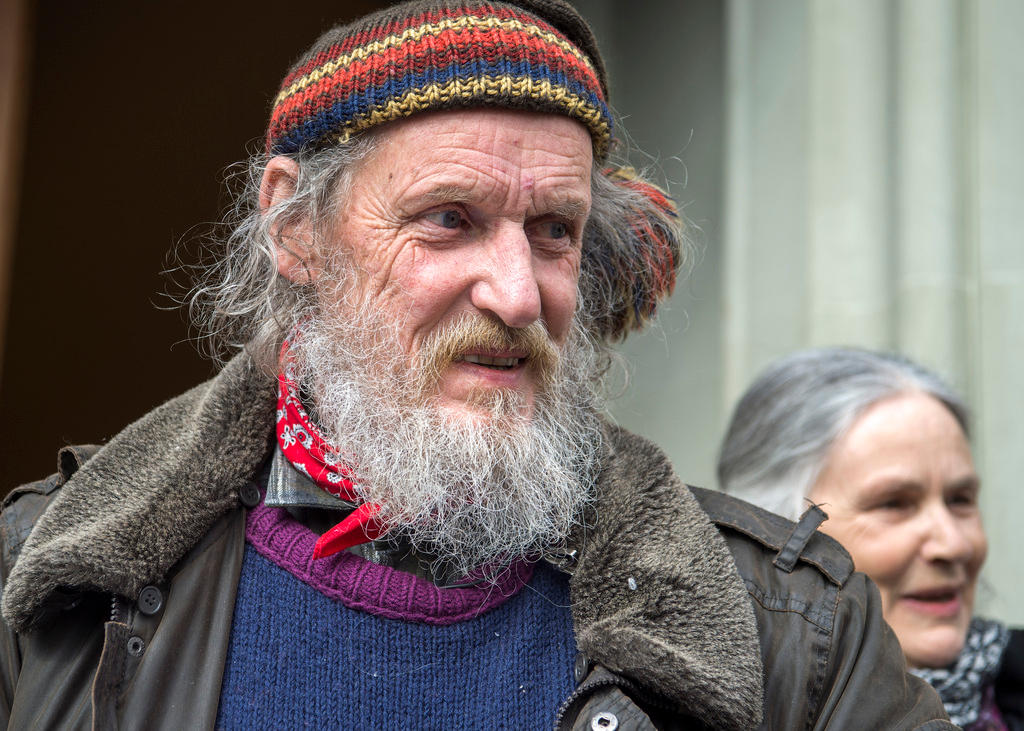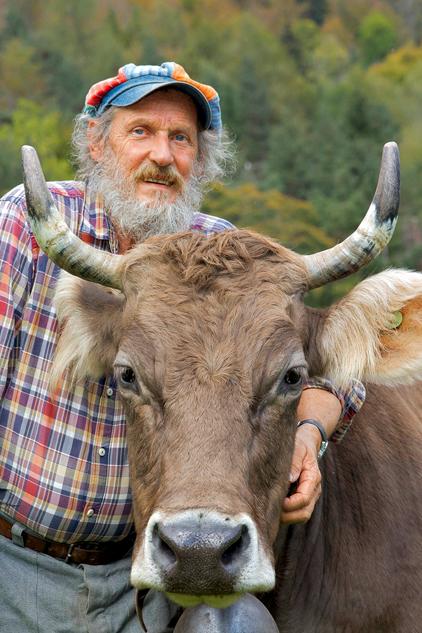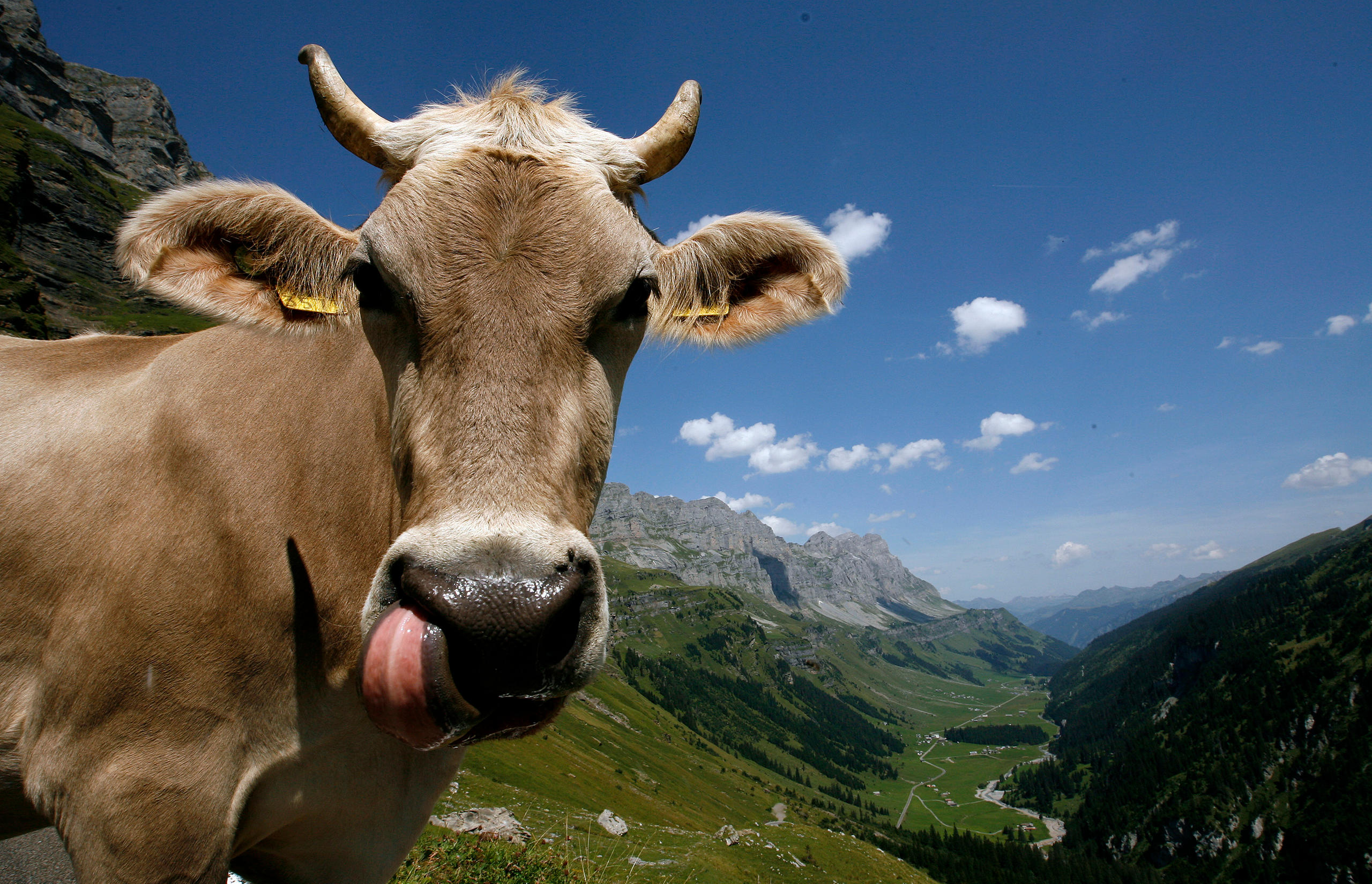
The man trumpeting in favour of cow horns

Can one man persuade 100,000 fellow citizens to care whether cows have horns or not? If the man is as bull-headed as Swiss farmer Armin Capaul, the answer is yes.
With his rosy cheeks, reddish-blond moustache and white beard, farmer Armin Capaul is a colourful character. A winter’s day finds him in layers of patterned knitwear and a red neckerchief. His bright blue car blasts country-rock music.
“Haven’t you heard of J.J. Cale? He’s a soulmate of mine,” says Capaul, referring to the late American singer-songwriter. I admit that I haven’t, and worry it’s a bad start to our visit. But he just laughs, and laughs some more when he sees my eyes widen at the sight of the narrow and twisted road leading to his 17-hectare farm perched high in the Bernese Jura. It’s home to cows and a bull, as well as goats, sheep, donkeys, dogs, cats and chickens.

More
Campaigning for cow horns
“You could put those on,” suggests Capaul, pointing to straw guest slippers as we enter the bright and warm open-plan kitchen. His wife, a pretty woman with a long grey braid, puts her knitting aside and offers me some Chai tea.
The dining table has an impressive stack of envelopes on it; they’ve been getting more than 100 a day lately. On the previous day, these contained 1,600 signatures for Capaul’s campaign on behalf of cows and goats.
“On the record day it was 2,304 signatures!” crows Capaul as he and his wife settle down to inspect the latest batch.
Pointing out the array of postmarks with pride, Claudia Capaul says, “They’re from all over Switzerland. And there’s no organisation or party behind this – it’s just my husband and the people who support him.” Their three children are also involved; one son maintains the Hornkuh websiteExternal link, the other son helps on the farm, and the daughter keeps the Facebook page current.
Campaigner

De-horning cows wasn’t a part of the curriculum when Armin Capaul got his farming degree in Graubünden in 1976. He’s lived in French-speaking Perrefitte for 20 years now, but doesn’t speak the local language. “It’s probably just as well – then I’d butt in too much!” he jokes in Swiss German.
But there’s one issue that he’s happy to butt heads on: the welfare of horn-bearing animals. It was around 1980 that Capaul first saw a herd of hornless cattle, and he didn’t like the look of them. “They were foaming at the mouth and sweating!” he says, recalling how they struggled to walk uphill to their summer pasture.
Currently, it’s common for farmers to de-bud young animals so that their horns won’t grow – the idea being that this protects both animals and humans from injury.
“That’s a lazy excuse! Cows have always had horns. In the old days, people had a closer relationship with them – they hugged, stroked, and talked to them,” he says, criticising free-stall barns where cows have more freedom to move around – and perhaps pick fights.
Capaul estimates that only about 10% of Swiss cows have horns, despite the postcard and advertising images suggesting otherwise. [According to the Swiss Farmers’ Union, there are no formal statistics; 10% could be correct, but it’s important to remember that many breeds don’t have horns.] The de-budding procedure – typically involving a hot poker-like device – is a painful one requiring anaesthesia. Besides, Capaul is convinced that the horns serve a purpose.
“The horns provide a form of ventilation, and it helps regulate the body temperature of a cow. It think it means better milk, too.” If Capaul gets his way, farmers who let the horns grow will receive federal subsidies.

More
Cows have horns in ads and in tourism
Caretaker
When Capaul isn’t totting up signatures or sending them to town authorities for verification, he’s busy with his animals. I follow him to the barn when it’s feeding time for the three calves, who share a straw-bedded pen while their mothers bunk with the other cows – each with her assigned manger and length of rope holding her tail away from any manure.
“Look at them – they’re in a trance,” he says. “In a free-stall barn they’d always be jostling for position. That would be stressful for them,” says Capaul, noting that they go outside every day – for short periods in winter, and for the better part of summer days.
He dislikes the trend of automated dairy farms where the cows are fed and milked by robots. “Those farmers just check whether the milk is flowing – they don’t have a connection with their animals.”
Capaul leads the hungry calves to their mothers, wrangles everybody into position, and lets them drink their fill as he lights a cigarette and takes a seat on a nearby bench.
“This is where I meditate,” he says, exhaling and gazing at his row of brown cows – each with an impressive set of glossy horns. He encourages me to touch Nevada’s horn to feel how warm it is – especially near her head. It’s true, and I’m surprised that taking a cow by the horn doesn’t annoy her. Instead, she just looks at me with her huge eyes as she continues to chew her cud.
An easy-going man, Capaul has two rules regarding pictures. One is that he has to have a hat on – “to disguise his bald spot,” titters his wife. The other is more serious: no flash photography in the barn, as this might startle the cows – one of whom had a miscarriage after a previous photo shoot.
The barn also houses sheep and goats, who have a fun-looking enclosure with various structures for climbing. “It’s even worse for goats to be de-horned – they have such thin scalps that it’s very painful,” remarks Capaul, who finds it kinder to breed hornless animals rather than remove the horns.
Even if Capaul’s initiative is accepted in a popular vote, he won’t benefit as he’ll be retired.
“I’m not doing this to make more money. It’s for the animals,” says Capaul, who has invested CHF55,000 ($55,315) over the past five years. Printing costs, postage, travel expenses, events – it all adds up, but Capaul says it’s been worth it.
“I want to give cows a voice, and to get people thinking about the issue,” says Capaul, urging me to call him Armin by the end of our visit. “It’s been a super experience.”
119,626
Armin Capaul was highly successful in his campaign to collect signatures. Overall, 151,788 people signed his initiative. Of these, 120,859 signatures were deemed valid by the local municipalities.
Capaul delivered these to the Federal Chancellery in Bern on March 23, 2016. On April 15, the chancellery said 119,626 of 120,130 signatures were valid – more than the required 100,000 – and Capaul’s initiative will therefore be put to a national vote.
It could, however, take around four years for voters to have their say.
Contact the author on Twitter @SMisickaExternal link or on WordPressExternal link.

In compliance with the JTI standards
More: SWI swissinfo.ch certified by the Journalism Trust Initiative































You can find an overview of ongoing debates with our journalists here . Please join us!
If you want to start a conversation about a topic raised in this article or want to report factual errors, email us at english@swissinfo.ch.